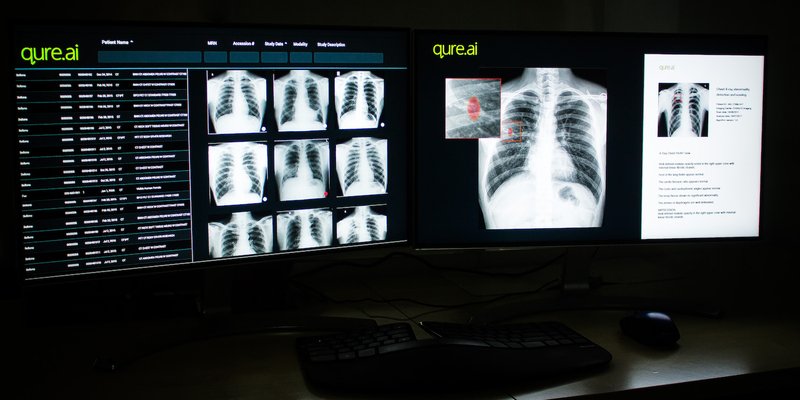High negative predictive value of AI in triage of normal chest X-rays

- noaantonissen
- Oct. 3, 2024
Accuracy of an artificial intelligence-enabled diagnostic assistance device in recognizing normal chest radiographs: a service evaluation
BJR Open, 2024
Abstract
Objectives
Artificial intelligence (AI) enabled devices may be able to optimize radiologists' productivity by identifying normal and abnormal chest X-rays (CXRs) for triaging. In this service evaluation, we investigated the accuracy of one such AI device (qXR).
Methods
A randomly sampled subset of general practice and outpatient-referred frontal CXRs from a National Health Service Trust was collected retrospectively from examinations conducted during November 2022 to January 2023. Ground truth was established by consensus between 2 radiologists. The main objective was to estimate negative predictive value (NPV) of AI.
Results
A total of 522 CXRs (458 [87.74%] normal CXRs) from 522 patients (median age, 64 years [IQR, 49-77]; 305 [58.43%] female) were analysed. AI predicted 348 CXRs as normal, of which 346 were truly normal (NPV: 99.43% [95% CI, 97.94-99.93]). The sensitivity, specificity, positive predictive value, and area under the ROC curve of AI were found to be 96.88% (95% CI, 89.16-99.62), 75.55% (95% CI, 71.34-79.42), 35.63% (95% CI, 28.53-43.23), and 91.92% (95% CI, 89.38-94.45), respectively. A sensitivity analysis was conducted to estimate NPV by varying assumptions of the prevalence of normal CXRs. The NPV ranged from 88.96% to 99.54% as prevalence increased.
Conclusions
The AI device recognized normal CXRs with high NPV and has the potential to increase radiologists' productivity.
Advances in knowledge
There is a need for more evidence on the utility of AI-enabled devices in identifying normal CXRs. This work adds to such limited evidence and enables researchers to plan studies to further evaluate the impact of such devices.